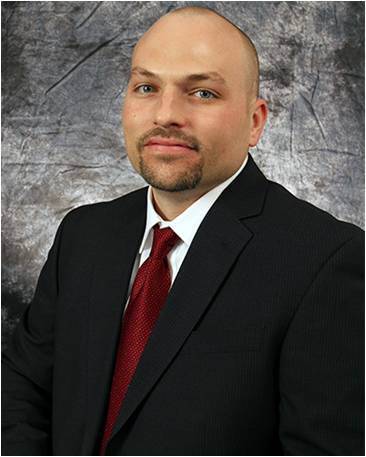Previously Shawn blogged about the Stanford Automotive Research Institute, so todays post is about the Virginia Tech Transportation Institute (VTTI) which is just down the road from my dorm. Luke Neurauter, who is the group leader for the Connected and Advanced Vehicle Systems (CAVS) within the Center for Advanced Automotive Research (CAAR), greeted me and we toured the facility which included the VTTI Smart Road. The Smart Road is a 2.2 mile closed test track built up to interstate standards that is used for a variety of research initiatives. These research initiatives range all the way from the longevity of certain concretes and road lighting to a favorite topic, driverless transportation!

Figure 1: Luke Neurauter is the group leader for the Connected and Advanced Vehicle Systems (CAVS) within the Center for Advanced Automotive Research (CAAR)
Luke’s team works specifically with V2V communications in semi-automated cars that still require someone in the driver’s seat. The information shared between vehicles can fall under a number of categories; safety, non-safety, business/commercial etc. CAVS’ job is to prioritize the critical safety information for the driver. It’s not enough to simply filter these messages, there must be a means of conveying these messages to the person in the driver’s seat. The communication should be intuitive without introducing more distraction. To determine the best solution, volunteers are chosen from the Blacksburg/Salem/Roanoke area (towns around Virginia Tech) to evaluate the functionality of the safety systems under test. These volunteers come to the Smart Road and drive VTTI’s sensor equipped cars. They are presented different scenarios such as another car rapidly approaching an intersection or perhaps someone suddenly hitting the breaks ahead. Some of the human factors noted during these tests include how much the driver relies on the technology, if they find it easy to use and how they expect to use this technology. For example, some may want the information displayed visually on a screen while others prefer it to be read aloud.

Figure 2: On the left is a picture of the VTTI Smart Road being used for night testing. The picture on the right was taken at a previous VTTI open house where visitors have the chance to ride on the Smart Road
CAVS works on projects with car manufacturers such as General Motors to analyze human factors by putting real customers behind the wheel of these new automated vehicles. Luke has a lot of experience with automation and just last year he and his team were responsible for researching many of the features on the newest 2013 Cadillac SRX, available with a suite of assistance technology. Some functions of this car that were evaluated include lane centering, parking assistance, forward collision warning, rear cross traffic alerts and super cruise. Super cruise is an automotive cruise control that is very close to total automation due to its full range of speeds. When in super cruise, the Cadillac SRX adjusts its own cruise control speed according to leading cars. This means when a car has come to a complete stop ahead (from a speed of 20mph or less), the Cadillac SRX will also come to a stop in an automated breaking fashion.
According to the U.S. Department of Transportation’s Policy on Automated Vehicle Development, the 2013 Cadillac SRX could be categorized as a level 2 (L2) automated vehicle. This is because the Cadillac SRX can simultaneously be in super cruise as well as alert the driver of unintended lane changes. L2 vehicles allow for “at least two primary control functions designed to work in unison to relieve the driver of control of those functions”.
If you would like to learn more about VTTI’s research concerning automated vehicles click here
Giselle

